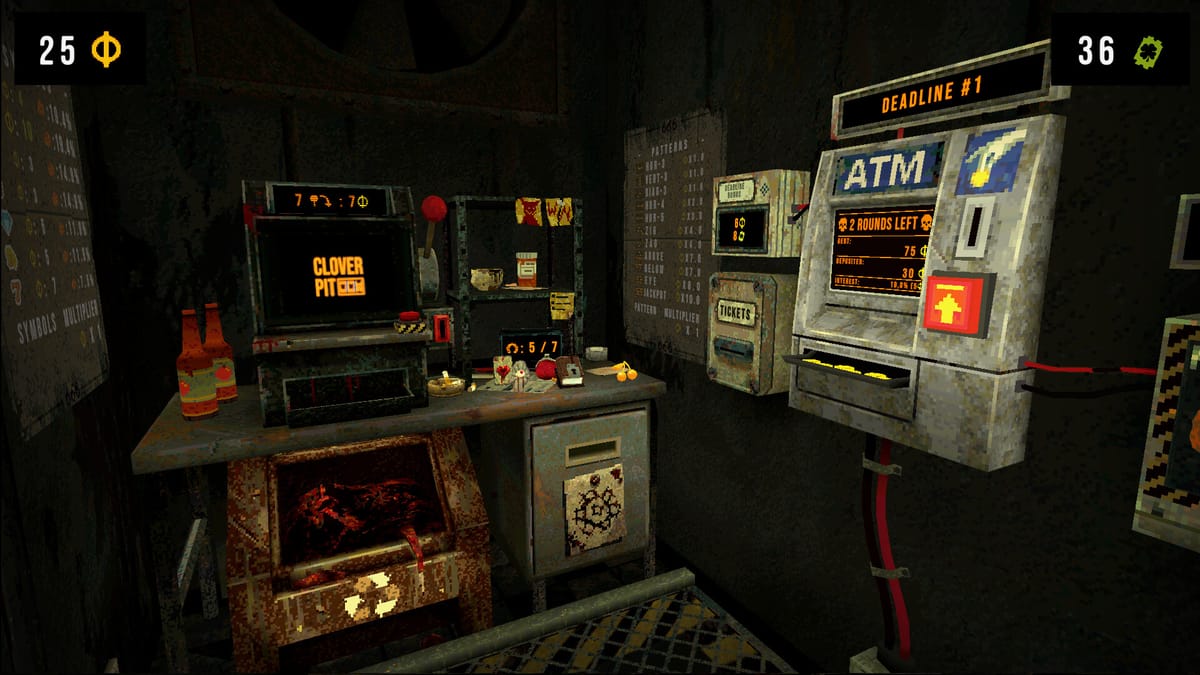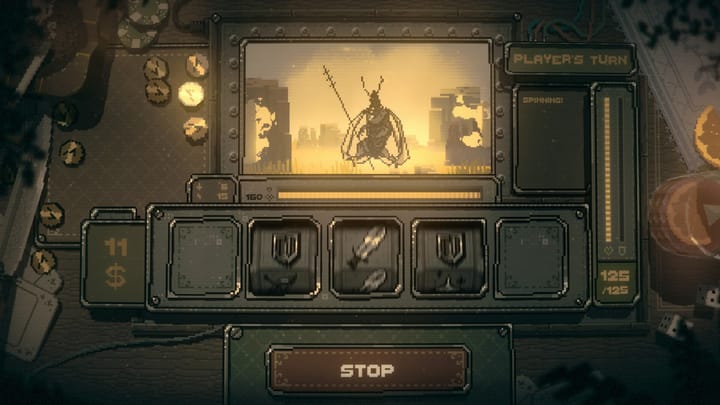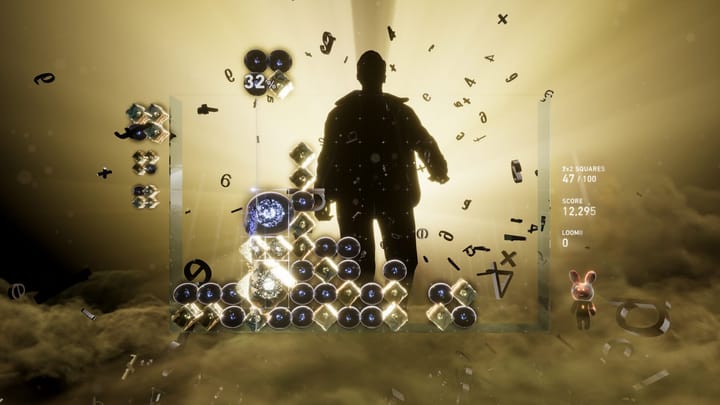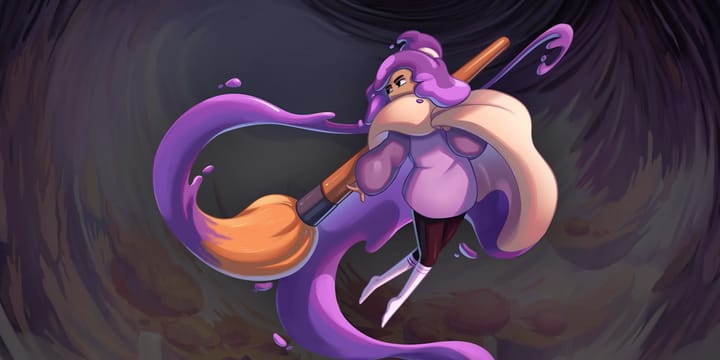When I was younger (for clarity, I'm talking pre-double figures here), one of my most prized toys/gadgets was this miniature slot machine. Small, but technically functional in all the ways a fully-fledged, actual device of its sort would be. Coins must be inserted to function, a lever was pulled and one could only win the accumulated amount if the desired symbols were successfully rolled. Three-in-a-row or nothing.
Naturally, as all kids with naive shortsightedness will inevitably do, one's obsession with winning, led me to shall we say tinker with the device's inner mechanics. A little forceful meddling here, a placing of one's thumb there and I could force one of the gadget's three wheels to land on any symbol I wanted. "It's not cheating; it's applying one's knowledge to manipulate things in my favour, actually!"
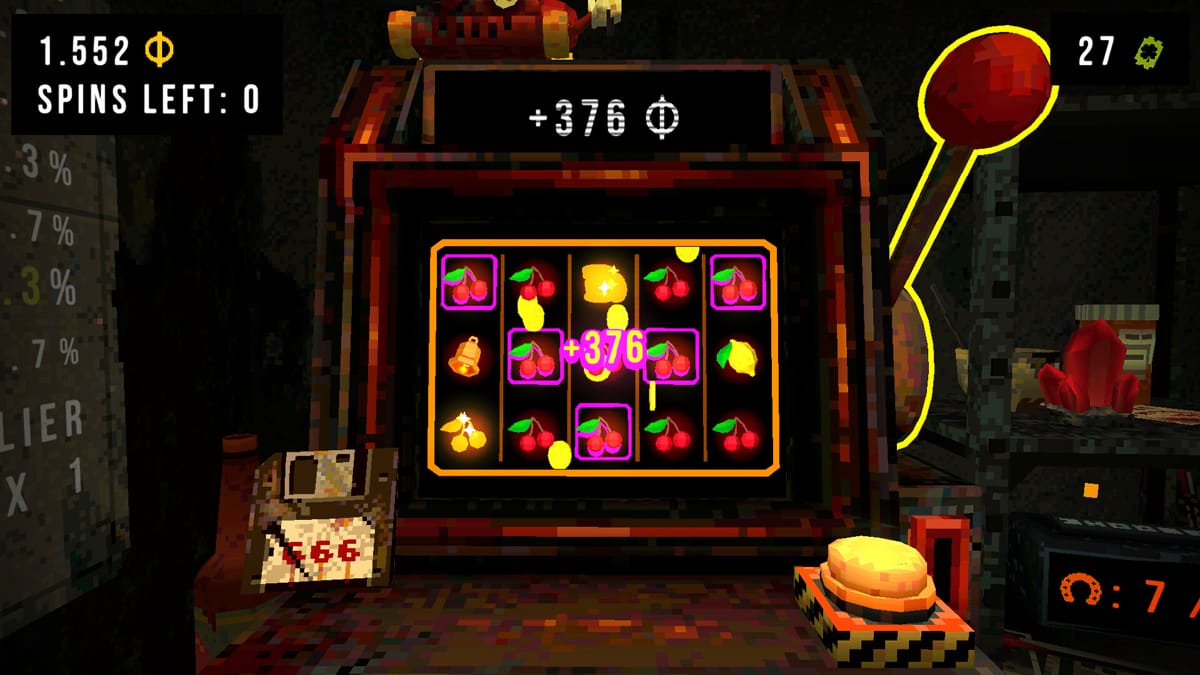
From a personal stand-point, this is but one of the handful of reasons developer Panik Arcade's CloverPit stood out as one of those occasional instances of "OK, I have to try this game out now!" during the most recent Triple-i Initiative presentation. Side-note: a mere two years into its inception, said showcase may well have crept into becoming one of the more personal favourites of the annual schedule of livestreams.
More broadly speaking, there's ample reason to see why something like CloverPit may entice. Its roguelike premise will no doubt repel as many people as it will attract. So too the industrial-grime visual direction provides an uncannily-desaturated take to on chunky polygonal geometry now the order of play among the independant scene. But most prevalent of all, the hunch that Panik may see opportunity in this most recent of trending micro-genres as of late – namely, the uptick in casino/gambling-themed roguelikes that can hail the likes of Dungeons & Degenerate Gamblers, Buckshot Roulette, Bingle Bangle and lest we forget, the almighty Balatro, among its roster.
So now it's the turn of slot machines as the starring architect of one's dopamine hits of success one second and crushing loss the next. And while CloverPit's presentation as much its core gameplay loop, isn't wholly original – indeed perhaps dancing a little too close to flattery-through-imitation – that's not to say its recent demo offering, an early-game snippet, falters in any respect. Because as familiar its visual stylings and risk:reward systems may be, CloverPit still, thankfully, recognizes that beneath the dirt, the filth and the glaze of electronically-powered colors, players still need that pressure weighed on them. That any one seemingly-minor decision could be costly.
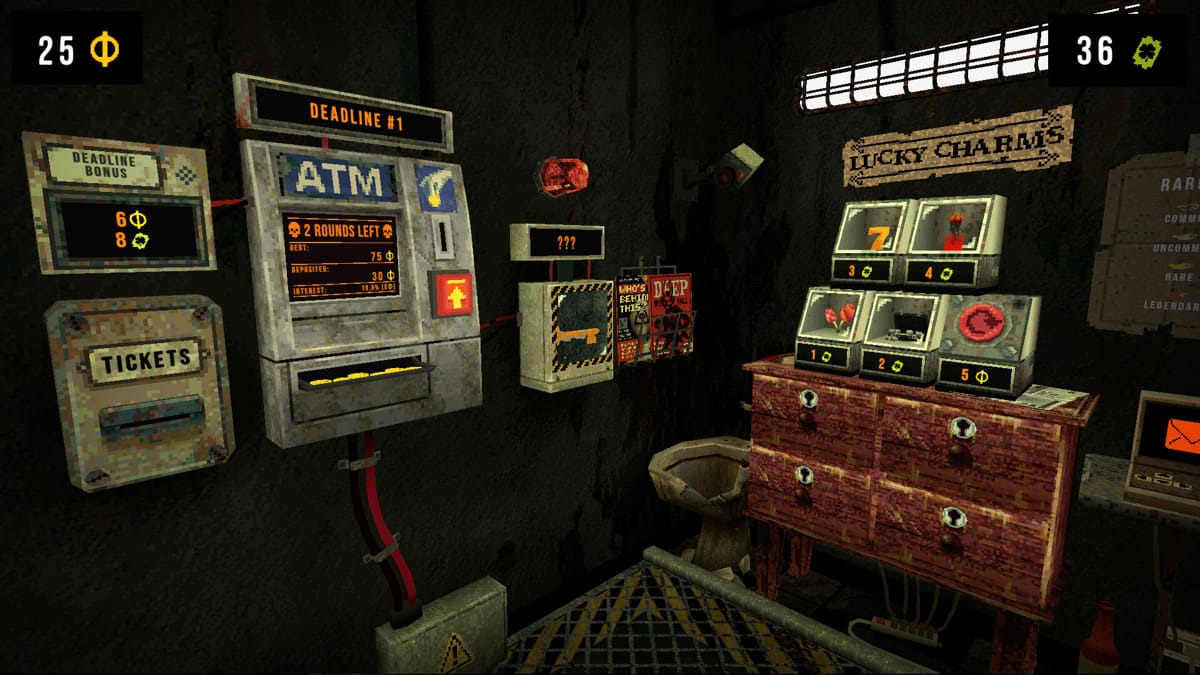
And boy has that cropped up a fair few times in the initial process of getting to the prized fifth phase of CloverPit. The fifth and final phase that sees your player-character rewarded with the crucial golden key to help them free themselves of this sadistic boxed-in chamber. Of a scenario that dictates – both in terms of narrative but also in stand-alone gameplay – that should you fail to accrue the required number of winnings/coins over a set amount of turns, the metal grating beneath gives way and it's game over.
Naturally, there are some nuances and opportunities to sprinkle some [un]foreseen fortune into the mix. For starters, in-between attempts, players can use the tickets they accrue to purchase any number of items that may, in one example, multiply winnings based on certain criteria or even hand you additional pulls on the machine.
There are also the occasional telephone exchanges that, even more interestingly, offer both positive and negative modifiers to one's run. That latter inclusion – the prospect of potentially "worsening" current conditions – and the uncertainty on even answering the in-game phone to begin with becoming, in of itself, a risk you may well want to avoid.
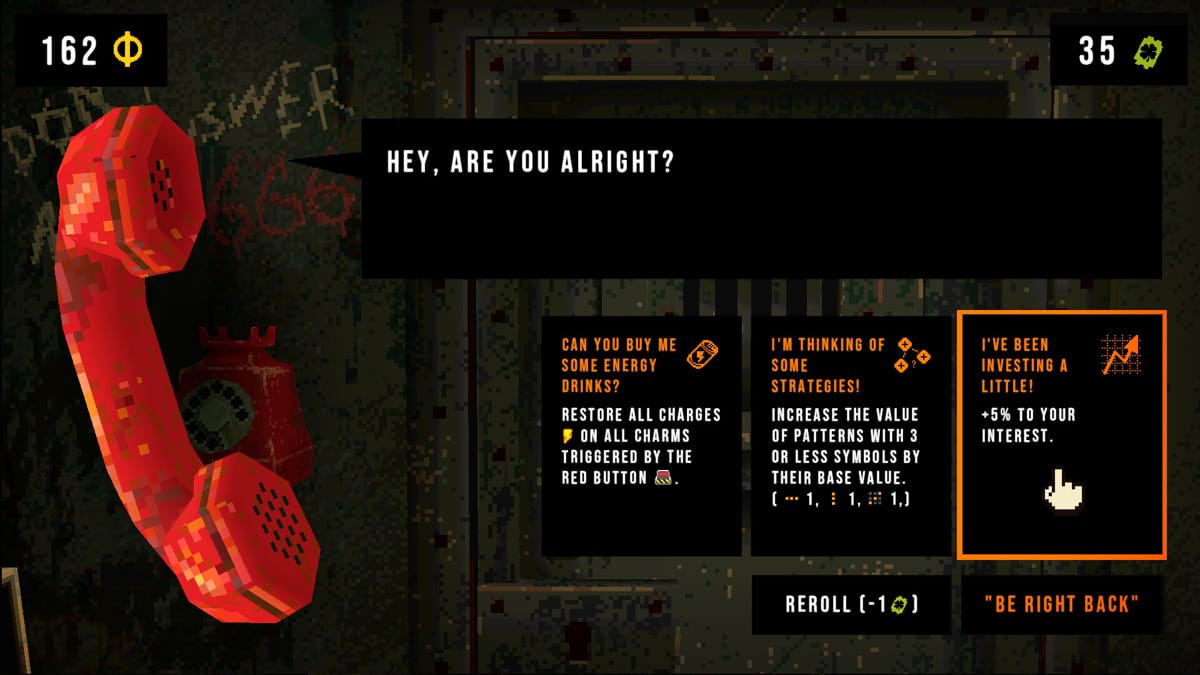
Easy as it may seem to demote this entire process to the most mundane and unhinged of RNG mechanisms, CloverPit thankfully manages to pepper enough of a dictatorial edge, that runs feel far from simply the luck of the draw. Being provided the actual percentile probability of certain symbols showing up, a useful tool that shouldn't go ignored. And while there will undoubtedly come scenarios that find you pulling back on the in-game machine's arm to be rewarded with a pittance of winnings, there's enough visible deduction and means to min-max particular routes, to prevent this from becoming the norm.
Even simple things like deciding how much of one's winnings to despoit in-between pulls, becomes an interestingly-tense deduction on how far (or close) to danger you want to put yourself. Who's to say that good run will last? What happens when you inevitably hit that miserable low-digit winnings? And the less said about having three 6's slide into view – helpful trinket aside, doing so completely bankrupting you of your current winnings – the better.
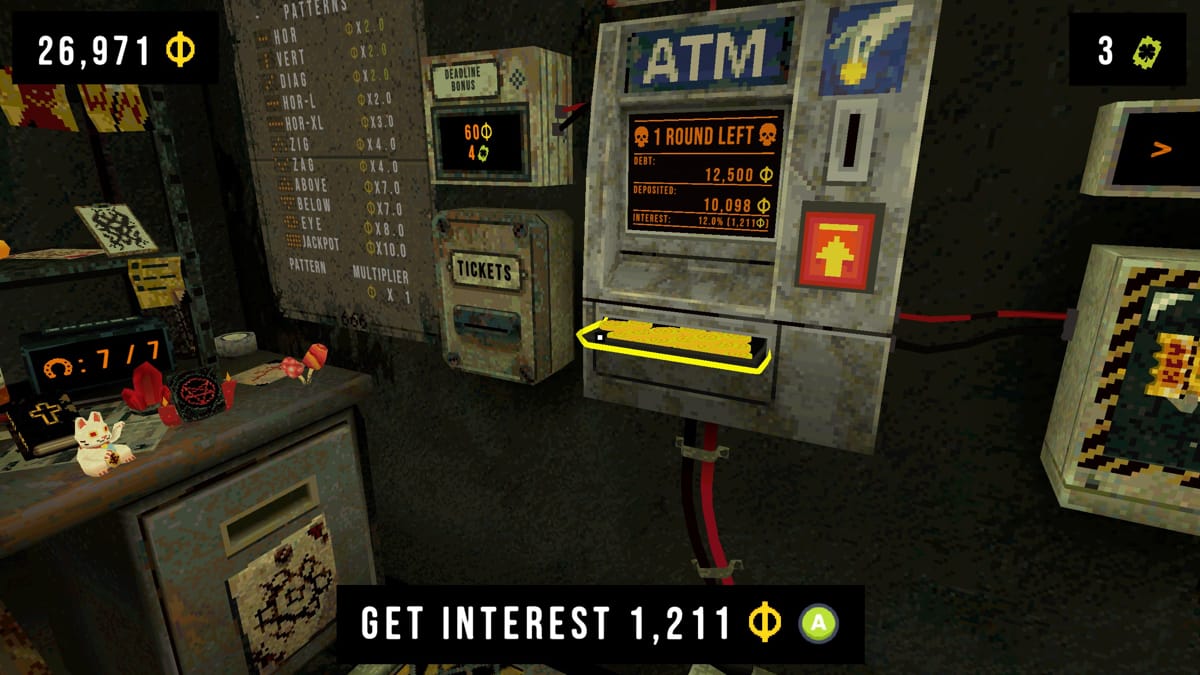
A brief (perhaps too-brief) plunging into the game's concept it might seem, CloverPit's current demo, has proven nonetheless effective. Effective at not just dismissing initial concerns that developer Panik Arcade are simply hopping on one or two popular bandwagons here – the casino/gambling-adjacent roguelike pitch for one and the chunky, polygonal early-3D aesthetic, on top. But better still, are finding ways and means to maintain this core loop as a matter of thoughtful-but-perilous decisions on what not to do, as much what to do.
Restraining one's self from overconfidence or overindulgence on presumed luck, is at the heart of any form of gambling. And with CloverPit, that converting of restraint to a perpetual cycle of gameplay decisions, has made this latest sadistic, roguelike take on gambling, an exciting one. As its in-game, enthused yet restrained call from the very slot machine cries at the start of every turn: "let's go gambling!"
CloverPit is scheduled to release sometime later this year for PC. A demo of the game is available now.


